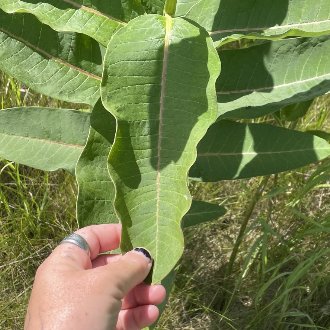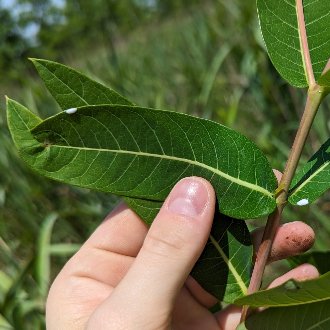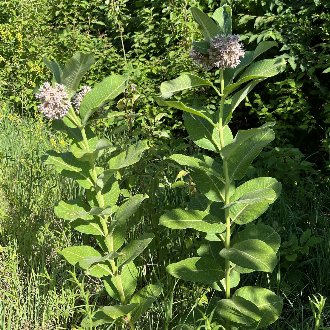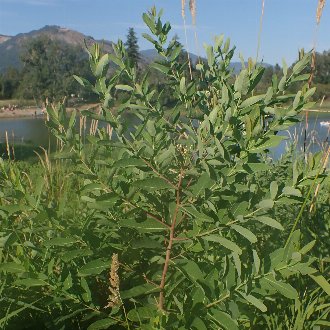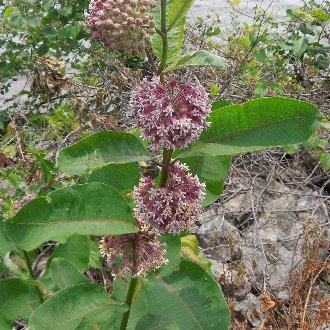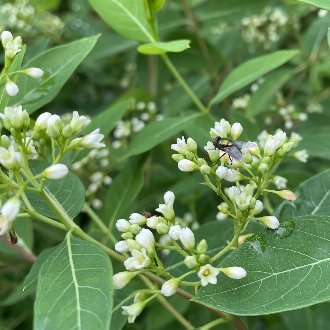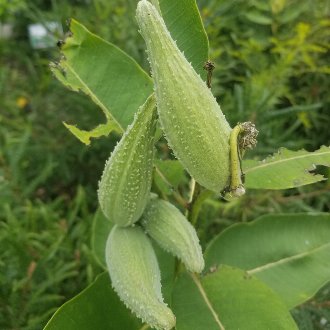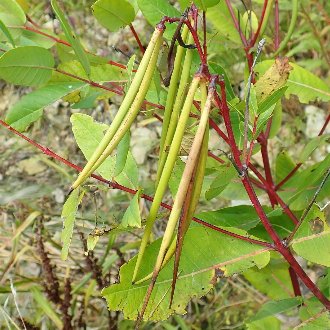Common Milkweed vs Hemp Dogbane
These two species are in the same family, and are easily confused early in the season. Both are long-rhizomatous, with simple, opposite leaves with entire margins. Later in the season, they can easily be told apart by flowers, seed pods, or branching habit. Common milkweed ranges into drier conditions and is more tolerant of sandy and/or clayey soils, whereas hemp dogbane ranges farther west and south, prefers loamy soils, and is more tolerant of temporary spring flooding.
Common Milkweed (Asclepias syriaca) | Hemp Dogbane (Apocynum cannabinum) |
A sun-loving rhizomatous perennial native to northeastern North America, best known for being a preferred host of the Monarch butterfly. | A rhizomatous perennial of moist, disturbed, sunny areas, native across North America. |
Leaves are larger, both longer (to 8in / 20 cm) and wider (to 3.5in / 9 cm.) Photo © mel letterman (they/he), CC BY 4.0. | Leaves are smaller, both shorter (to 3.5 in / 9cm) and narrower (to 2 in / 5cm.) Photo © natalie, Public Domain. |
Plants are mostly unbranched except occasionally at the very top of the plant to support more blooms. Photo © Gemma Wyatt & Sean Riha, CC BY 4.0. | Although plants are unbranched early in the growing season, plants branch extensively during summer. Side branches have extensive foliage. Photo © Braden J. Judson, Public Domain. |
Flowers are in larger, showier clusters of flowers, from dull grayish-pink to reddish-purple, in the top few leaf axils of the main stem. Photo © , CC BY-SA 4.0. | Flowers are less showy, a loose cluster of small white to greenish or yellowish flowers at the apex of the main stem and often some larger branches. Photo © Jon Wlasiuk, Public Domain. |
Fruits (seed pods) are stout, particularly at the base, and slightly pear-shaped. Photo © Jason E. Farabaugh, CC BY 4.0. | Fruits (seed pods) are long and narrow. Photo © Lynn Harper, Public Domain. |
References & External Resources
These short lists show only links helpful for ID. For a complete list of references and resources also covering other aspects of ecology, visit the links section of the full article on each plant, which is the first entry here.



